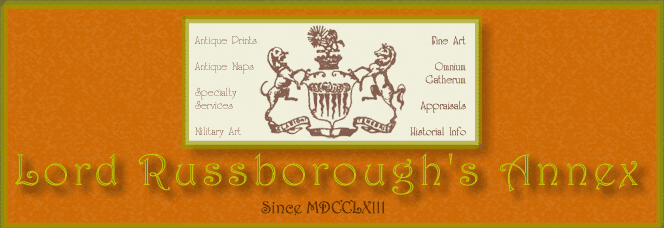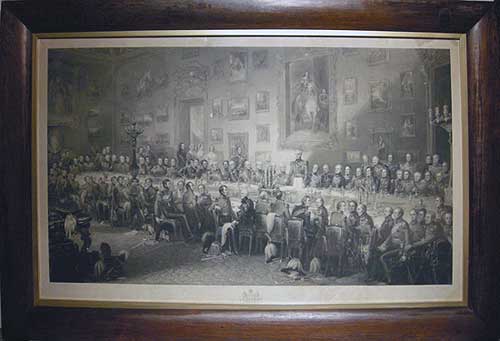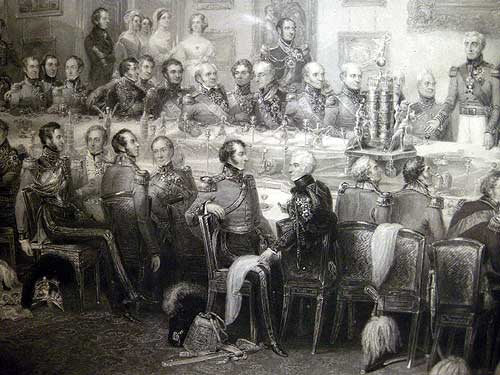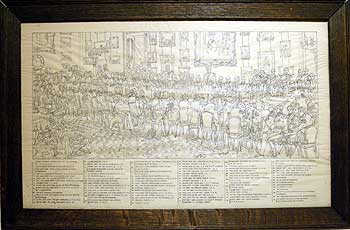The image is dedicated to the British Nation by the publisher Sir Francis Moon, who styled himself as Her Majesty's printseller in ordinary and to His Royal Highness Prince Albert. Moon had his London establishment at 10 Threadneedle Street. He is portrayed as number 87 in the key to the engraving.
William Salter 1804-1875 was educated in Honiton, Devon. He studied at James Northcote’s studio from 1822. Five years later he went on a 'Grand Tour' to Florence, Italy. Unlike other grand tourer’s, Salter took up employment as a professor at the Academy of Florence where he taught History Painting until 1833 when he returned to England.
Below this engraving, he has styled himself as “Professor of the first class of historical painting in the Academy of Florence. Academician and Corresponding Member of the Ducal Academy of the Fine Arts of Partino"
The story is, that the artist William Salter was on his horse in Hyde Park on June 18th., when he happened to hear and then see the (presumably the 20th.) banquet in progress at the Duke of Wellington's residence at Hyde Park corner, Number 1 London. He was so intrigued by the spectacle that he approached his patron with a proposal for a painting to capture the scene. His patron and pupil Lady Berghersh, consented to approach the Duke with the proposal. The Duke was immediately against the idea as he considered Salter's immaturity would not be up to the complexity of the painting Salter was proposing, as he was virtually unknown as an artist in England at the time. Lady Berghersh was the Duke's niece (many say his favourite). She and the Duke were close and kept up a correspondence for many years. The Duke, however, was persuaded through her good offices and he gave Salter access to the 90 foot long room and ornaments so that he could capture their likenesses.
Salter proved himself worthy of the task however and painted scores of military figures as preparation for what turned out to be his ‘grande œuvre,’ The Waterloo Banquet painting. Many of these original individual portraits are now in the National Portrait Gallery, London. He worked on this painting for five years at his studio in Pall Mall, persevering to obtain a sitting from the invitees. Each of the people in the painting was reported as a good likeness. 'The Iron Duke' was suitably impressed.
Continued below





